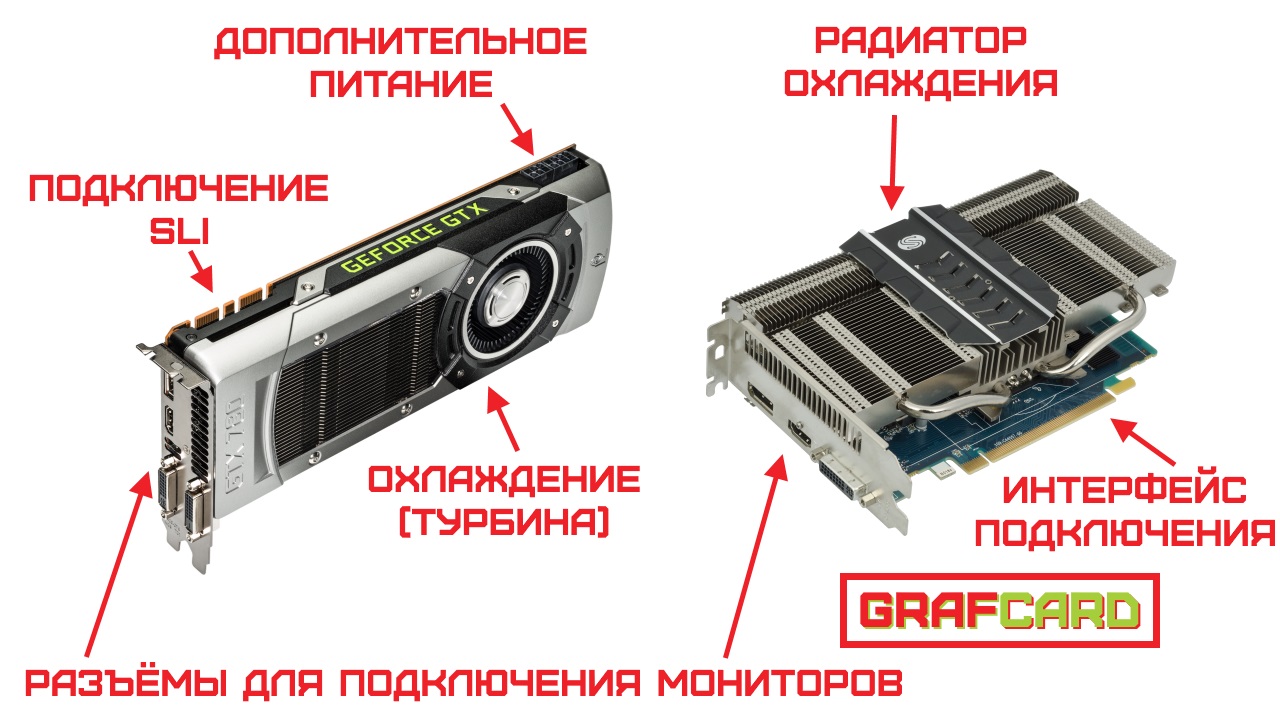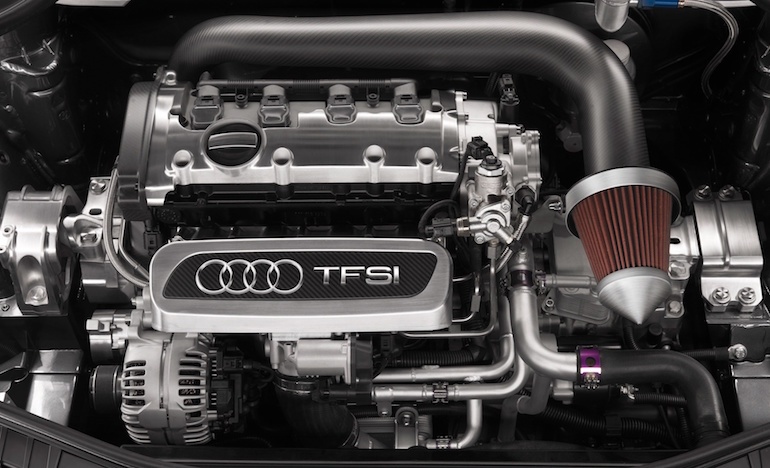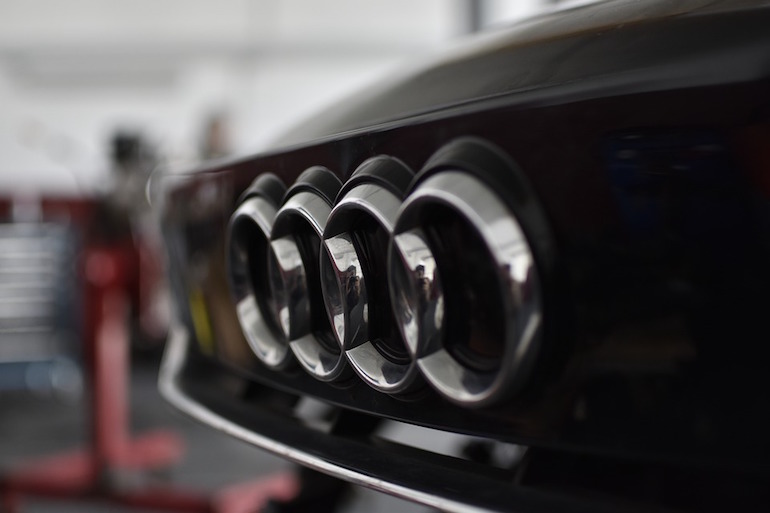
what it is? Device and characteristics. Video.
If we look at the technical characteristics of Volkswagen, Audi, Skoda cars, we will see engines in the line of power units, which are abbreviated as FSI, TSI, TFSI. We have already talked about FSI on our Vodi.su autoportal, in this article I would like to dwell on TFSI power units in more detail.
TFSI - abbreviation transcript
As you might guess, the letter T denotes the presence of a turbine. Thus, the main difference from FSI is the turbocharger, thanks to which the exhaust gases are re-burned, thus TFSI are distinguished by their efficiency and environmental friendliness - a minimum amount of CO2 enters the air.
The abbreviation TFSI stands for Turbo fuel stratified injection, which can be translated: turbocharged engine with stratified fuel injection. That is, it is revolutionary, for its time, a system of direct fuel injection into the combustion chamber of each individual piston, equipped with a turbine.

Thanks to this approach, excellent results are achieved:
- high engine power;
- big torque;
- relatively low fuel consumption, although turbocharged engines are traditionally not economical.
Mostly this type of motor is installed on Audi cars. Volkswagen, on the other hand, prefers to use a generally similar system in its cars - TSI (turbo engine with direct injection). FSI, in turn, are not equipped with a turbine.
For the first time TFSI was installed on the Audi A4 model. The power unit had a volume of 2 liters, while giving out 200 horsepower, and the tractive effort was 280 Nm. To achieve the same results on the engine of earlier designs, it would have to have a volume of the order of 3-3,5 liters and be equipped with 6 pistons.
In 2011, Audi engineers significantly upgraded the TFSI. Today, this second-generation two-liter power unit demonstrates the following characteristics:
- 211 HP at 4300-6000 rpm;
- torque 350 Nm at 1500-3200 rpm.
That is, even a non-professional can notice that engines of this type are distinguished by good power at both low and high speeds. Suffice it to compare: in 2011, Audi discontinued the 3.2-liter FSI with 6 pistons, which produced 255 hp. at 6500 rpm, and a torque of 330 Newton meters was achieved at 3-5 thousand rpm.
Here, for example, are the characteristics of the Audi A4 TFSI 1.8 liter, produced in 2007:
- power 160 hp at 4500 rpm;
- maximum torque of 250 Nm is reached at 1500 rpm;
- acceleration to hundreds takes 8,4 seconds;
- consumption in the urban cycle (manual transmission) - 9.9 liters of A-95;
- consumption on the highway — 5.5 liters.

If we take the all-wheel drive version of the Audi A4 Allroad 2.0 TFSI Quattro, then the two-liter turbocharged TFSI is capable of developing 252 hp. Acceleration to hundreds takes him 6.1 seconds, and the consumption is 8,6 liters in the city with an automatic transmission and 6,1 liters outside the city. The car is filled with A-95 gasoline.
Now feel the difference. Volkswagen Passat 2.0 FSI:
- power 150 hp at 6000 rpm;
- torque - 200 Nm at 3000 rpm;
- acceleration to hundreds - 9,4 seconds;
- in the urban cycle, a car with mechanics eats up 11,4 liters of A-95;
- extra-urban cycle - 6,4 liters.
That is, compared to the FSI, the TFSI engine has become a step forward thanks to the installation of a turbocharger. However, the changes also affected the constructive part.
Design features of TFSI engines
The turbocharger is installed in the exhaust manifold, which forms a common module, and the afterburned gases are re-supplied to the intake manifold. The fuel supply system has been changed due to the use of a booster pump in the secondary circuit, which is capable of pumping more pressure.
The fuel priming pump is controlled by the electronic control unit, so the volume of the fuel-air mixture that is injected into the pistons depends on the current load on the engine. If necessary, the pressure is increased, for example, if the car is moving in low gears downhill. Thus, it was possible to achieve significant savings in fuel consumption.

Another significant difference from FSI is in the bottom of the pistons. The combustion chambers in them are smaller, but at the same time they occupy a large area. This form allows you to work effectively with a reduced degree of compression.
In general, TFSI power units operate in the same way as all other engines of the Volkswagen concern:
- two circuits of the fuel system - low and high pressure;
- the low pressure circuit includes: a tank, a fuel pump, coarse and fine fuel filters, a fuel sensor;
- the direct injection system, i.e. the injector, is an integral part of the high pressure circuit.
The operating modes of all components are controlled by the control unit. It works according to complex algorithms that analyze various parameters of the car's systems, on the basis of which commands are sent to the actuators and a strictly measured amount of fuel enters the system.
However, turbine engines require a special approach, they have a number of disadvantages compared to conventional atmospherics:
- high-quality fuel is required;
- turbine repair is an expensive pleasure;
- increased requirements for engine oil.
But the advantages are on the face and they more than cover all these minor disadvantages.
Loading…
